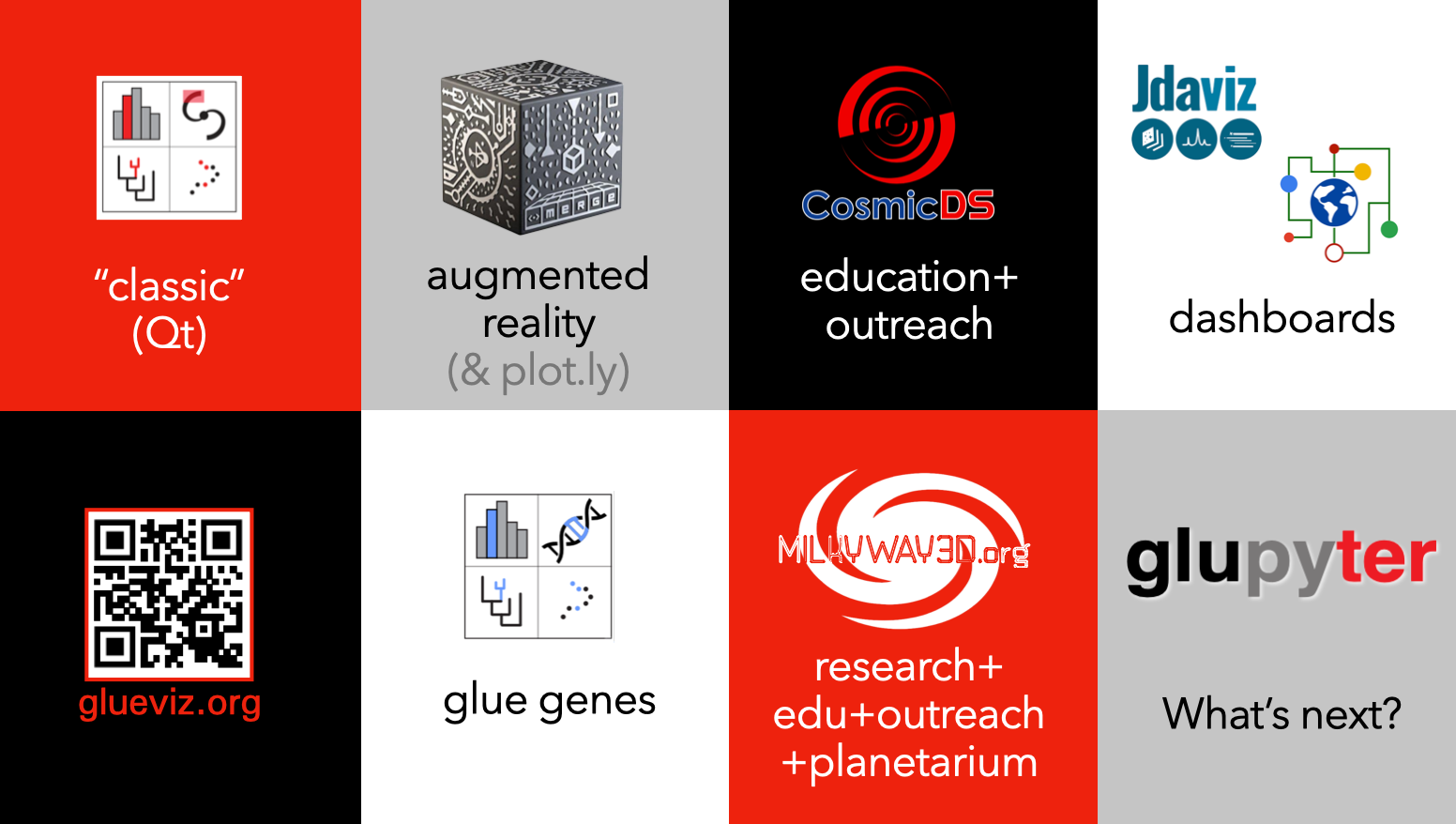Data Science
Celebrating Mass STEM Week with astrophysics and AI (Harvard Gazette)
Seamless linkages (between data archives) for visualization and analysis (@AAS 2024),
at
New Orleans, LA,
Thursday, January 11, 2024:
From Orreries to WorldWide Telescope: Making 2D Paths on the Sky into Motions in a 3D Universe,
at
Harvard University, Cambridge, MA,
Friday, November 3, 2023:
Bots heard ‘round the world: AI and the future of astronomy (ANU Article)
Exploring High-Dimensional Data in Astronomy, Genomics, and beyond, using glue,
at
ViZTIG Seminar (Alan Turing Institute) online, with Jonathan Foster,
Friday, March 10, 2023:
glue-ing together the Milky Way,
at
New England Star and Planet Formation Workshop, CfA,
Wednesday, June 28, 2023:


 An early invited presentation of
An early invited presentation of  Several different three dimensional models of the Universe can reproduce the two dimensional motions we see in our night sky accurately. It was not until...
Several different three dimensional models of the Universe can reproduce the two dimensional motions we see in our night sky accurately. It was not until... A public presentation at the Harvard College Observatory, given in conjunction with the launch of "Massachusetts STEM Week," focusing on how science (especially astronomy) is done today, and may be done in the future, with a look at the past.
A public presentation at the Harvard College Observatory, given in conjunction with the launch of "Massachusetts STEM Week," focusing on how science (especially astronomy) is done today, and may be done in the future, with a look at the past.

 A discussion of how the glue software can be used across a spectrum of applications, from simple, scripted web-based interactions, to dashboards, to fully flexible environments. Presented at the 2023 Gordon Research Conference on Data Visualization in Research and Education.
A discussion of how the glue software can be used across a spectrum of applications, from simple, scripted web-based interactions, to dashboards, to fully flexible environments. Presented at the 2023 Gordon Research Conference on Data Visualization in Research and Education.
 A slide deck to guide a conversation about Alyssa Goodman's astronomical, data visualization, prediction, and science education reserch and teaching endeavors.
A slide deck to guide a conversation about Alyssa Goodman's astronomical, data visualization, prediction, and science education reserch and teaching endeavors.
 Thanks in large part to Gaia observations of the Milky Way and rapid advances in data science, it has very recently become possible to map out: 1) the three-dimensional internal structure and galactic arrangement of star-forming regions and 2) the positions and motions of young stars forming in those regions—also in 3D. These advances are painting a NEW picture of NEW (freshly-formed!) parts of the Milky Way. The 3D, moving, picture we can re-create from the data is giving hints as to the origins of oscillations in the Galaxy's arms (e.g. The Radcliffe Wave) as well as to the role of feedback (e.g. in the Local Bubble) from supernovae in driving the formation of dense gas, and ultimately stars. The talk will focus primarily on science, while also including demonstrations of how data science and visualization tools, including glue, WorldWide Telescope and OpenSpace, have enabled these discoveries.
Thanks in large part to Gaia observations of the Milky Way and rapid advances in data science, it has very recently become possible to map out: 1) the three-dimensional internal structure and galactic arrangement of star-forming regions and 2) the positions and motions of young stars forming in those regions—also in 3D. These advances are painting a NEW picture of NEW (freshly-formed!) parts of the Milky Way. The 3D, moving, picture we can re-create from the data is giving hints as to the origins of oscillations in the Galaxy's arms (e.g. The Radcliffe Wave) as well as to the role of feedback (e.g. in the Local Bubble) from supernovae in driving the formation of dense gas, and ultimately stars. The talk will focus primarily on science, while also including demonstrations of how data science and visualization tools, including glue, WorldWide Telescope and OpenSpace, have enabled these discoveries.
 Check out Alyssa Goodman's presentation at JupyterCon 2023 in Paris France. Her talk features an extensive tour of the origins and usage of the high-dimensional data visualization and exploration environment known as "glue."
Check out Alyssa Goodman's presentation at JupyterCon 2023 in Paris France. Her talk features an extensive tour of the origins and usage of the high-dimensional data visualization and exploration environment known as "glue."
 An invitation for experts at the
An invitation for experts at the  An introduction to data visualization concepts, using key concepts from the "10 Questions to Ask when Creating a Visulization" (
An introduction to data visualization concepts, using key concepts from the "10 Questions to Ask when Creating a Visulization" (